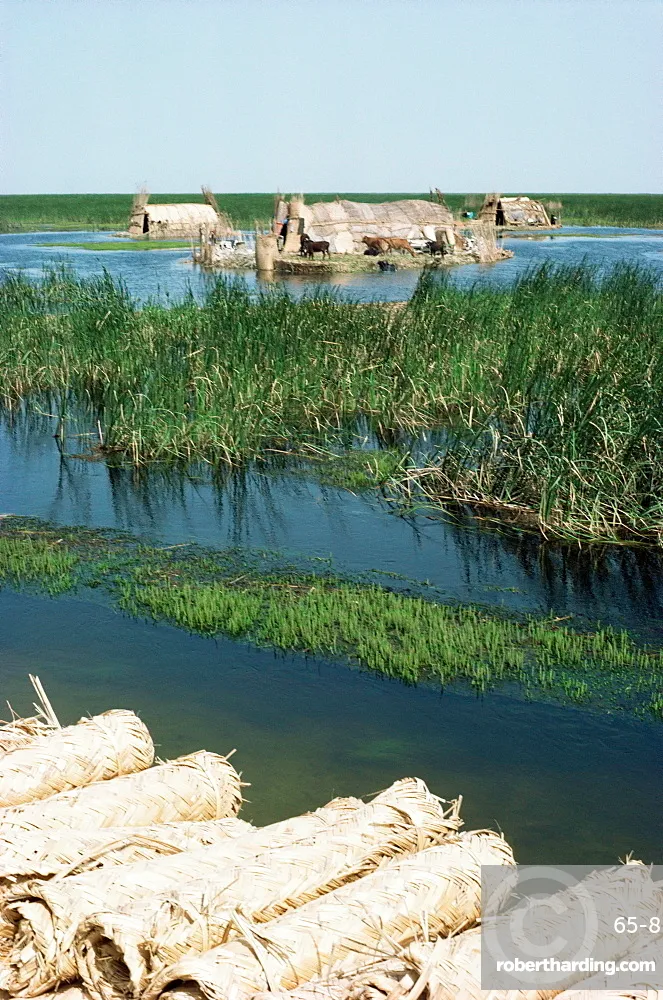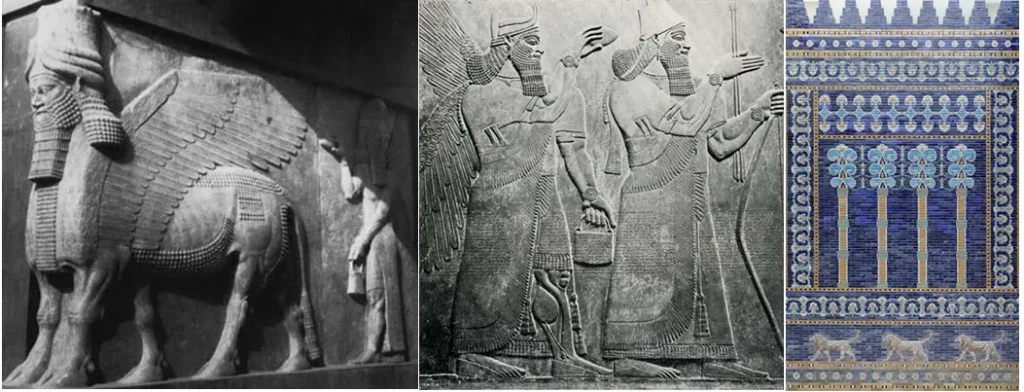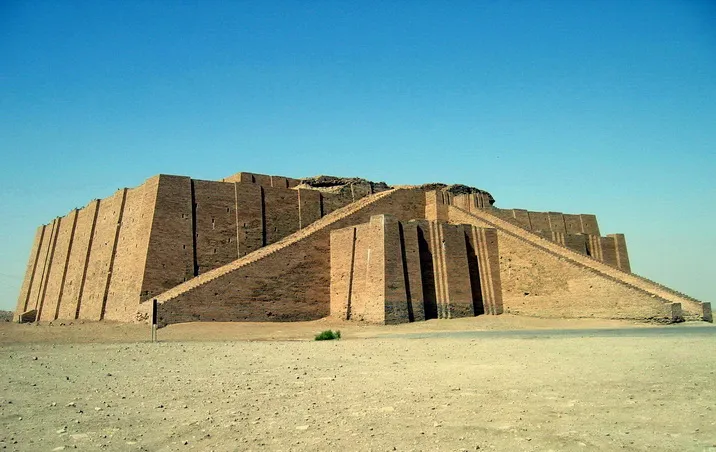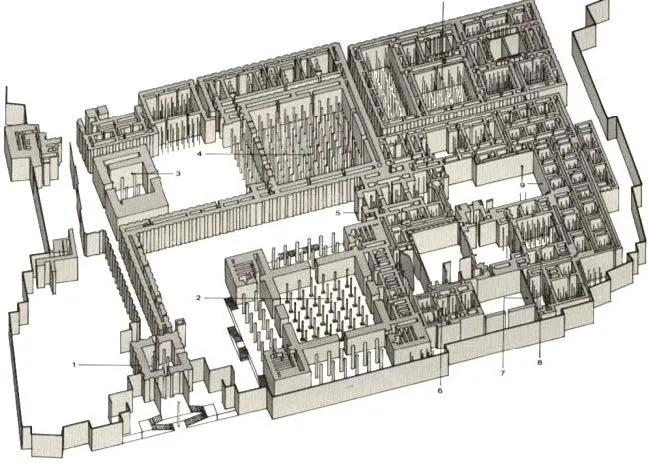If you want to know about the Egyptian architecture or roman architecture or gothic architecture, please click the link.
The architecture of the Near East is a rich and diverse reflection of the cultural heritage and history of the region, encompassing a wide range of styles and influences from various civilizations and cultures that have inhabited the area over the centuries.
1) Architectural influences
i) History
- Started as villages on the flat land between Tigris and Euphrates rivers – “Mesopotamia”
- Turned into city-states with populations of thousands
- Each city-state surrounded by a wall and dominated by a large temple
- Society of kings, craftsmen, soldiers, farmers, priests
- Fought and traded with each other
- Sometimes would conquer each other and form an empire
Mesopotamian
- City-states of Ur, Babylon, Agade, Ashur and Damascus
- 2334 BC, King Sargon of Agade formed the first major empire
- 1792 BC, next by King Hammurabi
- Instituted laws to keep order
- Invention of writing – pictograms or cuneiform records on clay tablets
Assyrian
- Based in Ashur, biggest empire under King Ashurbanipal – conquered Mesopotamia, Syria, Palestine and Egypt

Persian
- Begun by Cyrus the Great from 559 to 529 BC
- Covered Mesopotamia, Anatolia, Eastern Mediterranean, Bactria, Indus Valley and North Africa
- Darius I had provinces ruled by a satrap, who guarded the roads, collected taxes and controlled the army
- Local peoples were allowed to keep their religions and customs
- Capital moved from Susa to Persepolis
- Network of roads linking the royal court to other parts of the empire – from Susa in Persia to Sardis in Anatolia
- Traded raw materials, carpets and spices
- Darius and Xerxes tried to conquer Greece
- Ended with the defeat of Darius III to Alexander the Great of Macedonia
ii) Religion
- Each city-state worshipped their own god for protection.
- People aimed to make peace with their wrathful god.

iii) Geography and geology

Fertile Crescent:
- Marshlands with few natural advantages aside from water and soil
- Import materials like hardwood and metals
Also:
- Deserts of the Arabian Peninsula
- Mountains and plateaux from west to east
2) Architectural character
i) Materials
- Only materials readily available was clay, soil, reeds, rushes
- Bricks made of mud and chopped straw, sun-dried or kiln-fired
- Timber, copper, tin, lead gold, silver imported
ii) Decoration
- Colossal winged-bulls guarding chief portals
- Polychrome glazed bricks in blue, white, yellow, green
- Murals of decorative continuous stone

3) Examples
i) Ziggurats
- Religious buildings built next to temples
- On top was a small temple

Development:
- Archaic ziggurat
- Two or Three-staged ziggurat
- Seven-staged ziggurat during the Assyrian period

Ziggurat at Ur
- 2000 BC
ii) Palaces
- Kings celebrated their victories, wealth and power by building large palaces

Palace Platform at Persepolis
- Ruins still exist
- 50 years to build
- People from all over the empire were involved in its construction
- Variety of architectural styles
- parts: audience halls, reception halls, storerooms for tributes and valuables, military quarters, apadana – tallest building, with 36 columns of 20m height
iii) Dwellings
- Known as Megaron
- Entrance at end rather than on the long sides
- Portico – colonnaded space forming an entrance or vestibule, with a roof supported on one side by columns
- Suited to climate of Anatolian plateau
Overall, the architecture of the Near East is a testament to the rich cultural heritage and history of the region, reflecting the influence of diverse civilizations, cultures, and religions over the centuries.